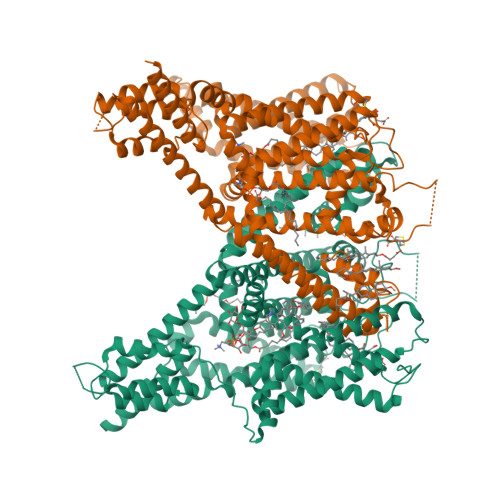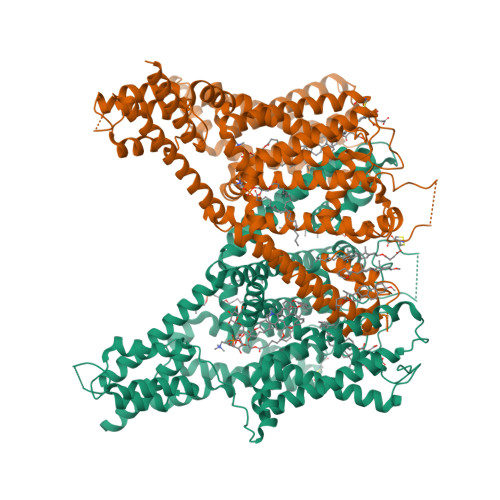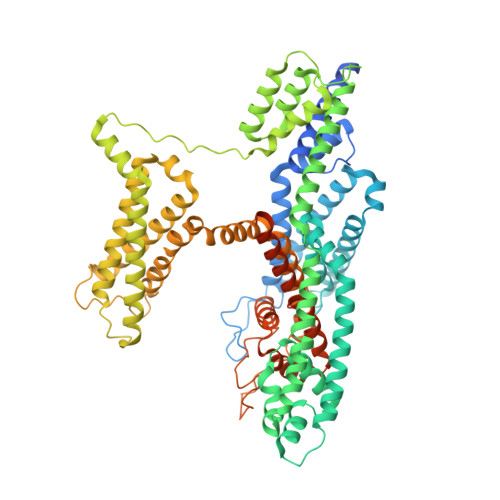Structural basis for inhibition of the lysosomal two-pore channel TPC2 by a small molecule antagonist.
Chi, G., Jaslan, D., Kudrina, V., Bock, J., Li, H., Pike, A.C.W., Rautenberg, S., Krogsaeter, E., Bohstedt, T., Wang, D., McKinley, G., Fernandez-Cid, A., Mukhopadhyay, S.M.M., Burgess-Brown, N.A., Keller, M., Bracher, F., Grimm, C., Durr, K.L.(2024) Structure 32: 1137-1149.e4
- PubMed: 38815576
- DOI: https://doi.org/10.1016/j.str.2024.05.005
- Primary Citation of Related Structures:
8OUO - PubMed Abstract:
Two pore channels are lysosomal cation channels with crucial roles in tumor angiogenesis and viral release from endosomes. Inhibition of the two-pore channel 2 (TPC2) has emerged as potential therapeutic strategy for the treatment of cancers and viral infections, including Ebola and COVID-19. Here, we demonstrate that antagonist SG-094, a synthetic analog of the Chinese alkaloid medicine tetrandrine with increased potency and reduced toxicity, induces asymmetrical structural changes leading to a single binding pocket at only one intersubunit interface within the asymmetrical dimer. Supported by functional characterization of mutants by Ca 2+ imaging and patch clamp experiments, we identify key residues in S1 and S4 involved in compound binding to the voltage sensing domain II. SG-094 arrests IIS4 in a downward shifted state which prevents pore opening via the IIS4/S5 linker, hence resembling gating modifiers of canonical VGICs. These findings may guide the rational development of new therapeutics antagonizing TPC2 activity.
Organizational Affiliation:
Centre for Medicines Discovery, Nuffield Department of Medicine, University of Oxford, Nuffield Department of Medicine Research Building, Oxford OX3 7FZ, UK; Structural Genomics Consortium, Nuffield Department of Medicine, University of Oxford, Nuffield Department of Medicine Research Building, Oxford OX3 7FZ, UK. Electronic address: gamma.chi@cmd.ox.ac.uk.























